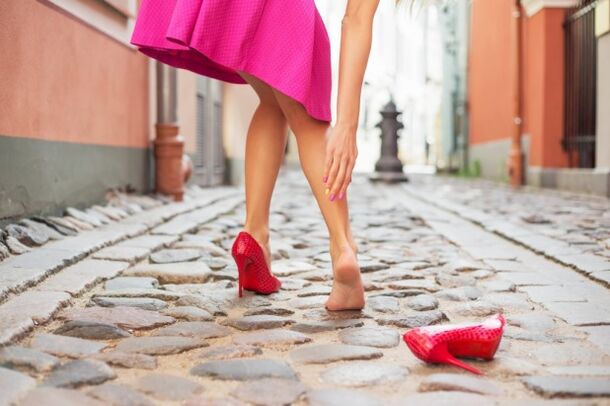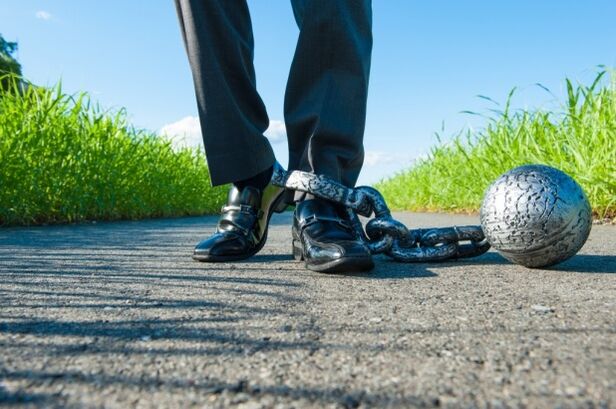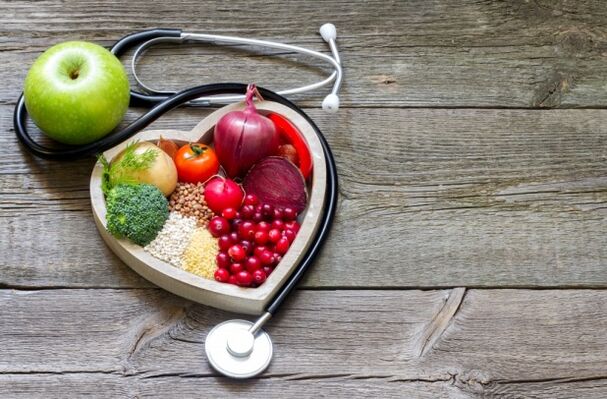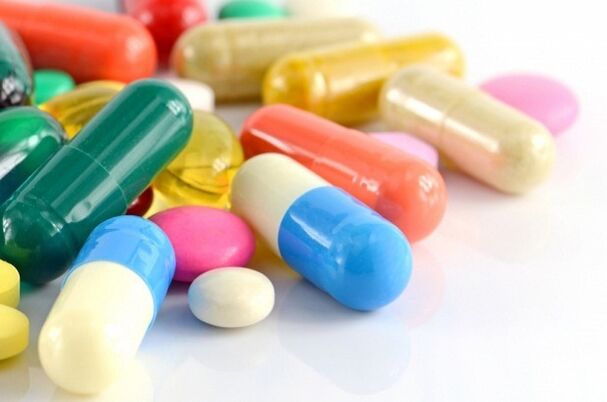Physical pain is an uncomfortable and multifaceted sensation. The presence of a pain factor signals that there is a problem in the body. By locating and describing what kind of pain the patient is experiencing, the specialist will be able to identify their source and cause. If there is a suspicion of the presence of varicose veins, then for an accurate differentiation of the problem, general clinical studies (blood, urine) and, possibly, instrumental examinations will be required.

But in order to independently determine the presence of a problem and turn to a specialist, it is important to highlight it against the background of common fatigue or maltreatment. What kind of pain does a person with varicose veins experience? What is their peculiarity? And what treatment is possible in this case? You will find the answers to these and other questions in our article.
Leg pain with varicose veins: symptoms and causes
Varicose vein pain is not the only manifestation of this disease, but it causes serious concerns. How severe are leg pains with varicose veins? Of course, there are differences in individual sensitivity thresholds, but the intensity of most pain syndromes is due to the peculiarities of the current pathological process.
Expert opinion
Pain in the legs with varicose veins includes a wide range of unpleasant sensations: pain, spasms, cramps, burning, stretching and pressure along the venous bed. They have an unexpected, painful and pulsating character.
As a rule, pain syndrome is felt more or less, depending on the position of the body, whether it is loaded with any load at the moment or not. Pain also has a characteristic such as time dependence. This means that with the advent of a certain time of day, the pain syndrome begins to intensify. So severe pain with varicose veins appear starting in the second half of the day. Varicose veins of the uterus and varicose veins of the small pelvis, in which severe back pain is often felt in the lower abdomen, also have a similar dependence on time.
An insidious disease like varicose veins covers the entire limb and can create pain in the joints of the lower leg, calf muscles and popliteal cavity. The person experiences the sharpest uncomfortable sensations in the area of neurovascular formations. In the area where the vascular bundle extends most superficially, edema of the legs may appear additionally. This is another sign that varicose veins are progressing, and there is already a violation of lymph outflow. Swellingnjtja makes your foot pain worse? Of course yes. Swelling, formed as a result of disorders in the venous system of the lower extremities, is characterized by compression on the affected vessel and even a local increase in temperature. The combination of signs such as pain in the vein and its deformation, persistent, persistent edema and trophic changes indicate stage II varicose veins. This stage is considered an advanced form of the disease. To prevent this, it is important to know the provocative factors of this vascular disease and its exact symptoms.

The presence of one of the following symptoms should alert and urge you to seek medical advice:
- a feeling of heaviness in the legs and a feeling of muscle weakness;
- tingling and burning sensation along the veins;
- feeling of internal pressure or "bloating";
- the appearance of telangiectasia and an increase in the venous pattern;
- swelling of deformed veins;
- trophic changes of the skin;
- long non-healing wounds on the legs;
- edematous phenomena;
- numbness of the lower extremities;
- leg muscle cramps;
- pain syndrome.
No disease appears on its own. There are definitely factors that can be called provocative. Varicose veins are no exception, so its appearance can be caused by:
- hereditary predisposition;
- congenital weakness of connective tissue and vascular walls;
- inactive lifestyle and static sports;
- excessive physical activity;
- prolonged forced stay or stay (for example, at work);
- inadequate nutrition and overweight;
- the presence of bad habits;
- pregnancy and childbirth;
- hormonal imbalance;
- soft tissue injuries;
- Surgical intervention;
- liver disease.
Based on the presence of these factors in a person, he is included in the risk group for the development of vascular pathology. How to minimize the risk of developing the disease? What can you do if you start to experience pain in your legs? How and how to relieve or reduce leg pain with varicose veins? How to help yourself to alleviate the symptoms of varicose veins and how to treat blood vessels, further in our article.
Leg pain with varicose veins: prevention and treatment

Before you start engaging in the prevention and treatment of vascular disease, is it worth understanding a little why there is leg pain with varicose veins? Pain in the legs with varicose veins occurs due to the fact that an irreversible pathological process occurs in the veins, under the influence of which they stretch and deform, blood circulation is disturbed and venous stasis occurs. Therefore, preventive measures and treatment will aim at strengthening the walls of the veins, and not exclusively at removing the pain. With varicose veins, the legs require special care and attention. What to do when the first signs of pathology development appear?
The first thing you need to do when something hurts you is to see a doctor.
If, after a series of manipulations, a specialist discovers that the pain is caused by varicose veins, then the appropriate treatment will be chosen. It will help get rid of the manifestations of varicose veins and improve the quality of life, because varicose veins are not a sentence.
In the treatment of absolutely any disease, in the first place is the recommendation to change the lifestyle. It is simply impossible to be a healthy person with a passive lifestyle, bad habits, imbalance in daily routine and improper diet. Therefore, the first step that will help eliminate leg pain with varicose veins will be a qualitative change and the formation of a healthy lifestyle. It is necessary to bring harmony in the way of work and rest. Work should not be associated with excessive physical and mental stress. Rest should include a full and healthy night's sleep. Free time should be spent actively - staying in the fresh air and playing sports. The latter include swimming, hiking, aerobics. Any non-shock and not overloaded with vigorous physical activity classes.
Expert opinion
In order for the venous walls to be strong and elastic, it is important to eat properly. Here, depending on the stage of the disease and its dynamics, a specialist can offer a therapeutic diet. The main principle on which it is built is balance. The diet should include foods rich in vitamins, fiber, plant fiber, flavonoids, etc. It is useful to eat chicken or lean beef, as well as white fish, berries and fruits with vitamin C, dried fruits (raisins, dates), almost all vegetables, nuts and legumes, whole grains, and beveragesnatural without gas. It is necessary to exclude fried, salted, smoked and spicy.
If, for any reason, an additional source of nutrients is required, then a specialist will prescribe it - a complex of venotonic vitamins and plant extracts, which act simultaneously in several directions, due to the content of natural active ingredients in its composition. By taking this medicine, you can strengthen and clean the walls of venous vessels, improve blood circulation, reduce the permeability and fragility of capillaries.
Further, depending on which specialist determines the stage of the disease, it will also depend on how the disease will be treated - conservatively or radically.
Conservative treatments include:
- taking medication;
- use of external products;
- physiotherapy;
- wearing medical compression stockings.

The use of medication will stop venous bed damage, control blood viscosity levels and blood clot formation, and will also have an antispasmodic and anti-inflammatory effect. Taking medication in combination with the use of local remedies will increase the positive effect on the veins. You can use an oil or cream for varicose vein pain not only for treatment but also for prevention. The action will depend on the composition of the product. The components included in it can be synthetic and natural. Products with a synthetic composition are used not only to eliminate swelling, fatigue and pain, but also to heal from venous surgery. Varicose veins in its initial stages, during pregnancy or being at risk can be resisted by using products with a natural composition. Their effectiveness is directly related to the natural active ingredients included in the composition. Foot cream with extracts of chestnut, green tea and ginkgo biloba has a venotonic effect, which will help eliminate leg pain with varicose veins. Thanks to the use of this cream, you can relieve inflammation and pain, as well as improve the appearance of the skin.
Medical gymnastics will make an important contribution to improving the venous system.
Daily exercise, no harder than morning exercises, will help relieve the unpleasant sensations of numbness in the limbs, cramps and feelings of heaviness. The group of exercises is chosen individually, taking into account the possibilities and the situation. At home, the most popular are "Bicycles", "Scissors" and a stand on the edges of the shoulders. In an office setting, sitting at a desk, you can also stretch your legs simply by rotating your legs, bending and not bending your toes.
To improve blood circulation, to relieve unpleasant symptoms such as swelling and pain, daily wearing of compression stockings is recommended. The type of product and the degree of its compression are chosen taking into account the dynamics of the disease.
Radical therapy includes invasive and minimally invasive methods. Specialists try to address the latter, in cases where conservative treatment does not help or the situation is assessed as difficult.
Take care of your health!




































